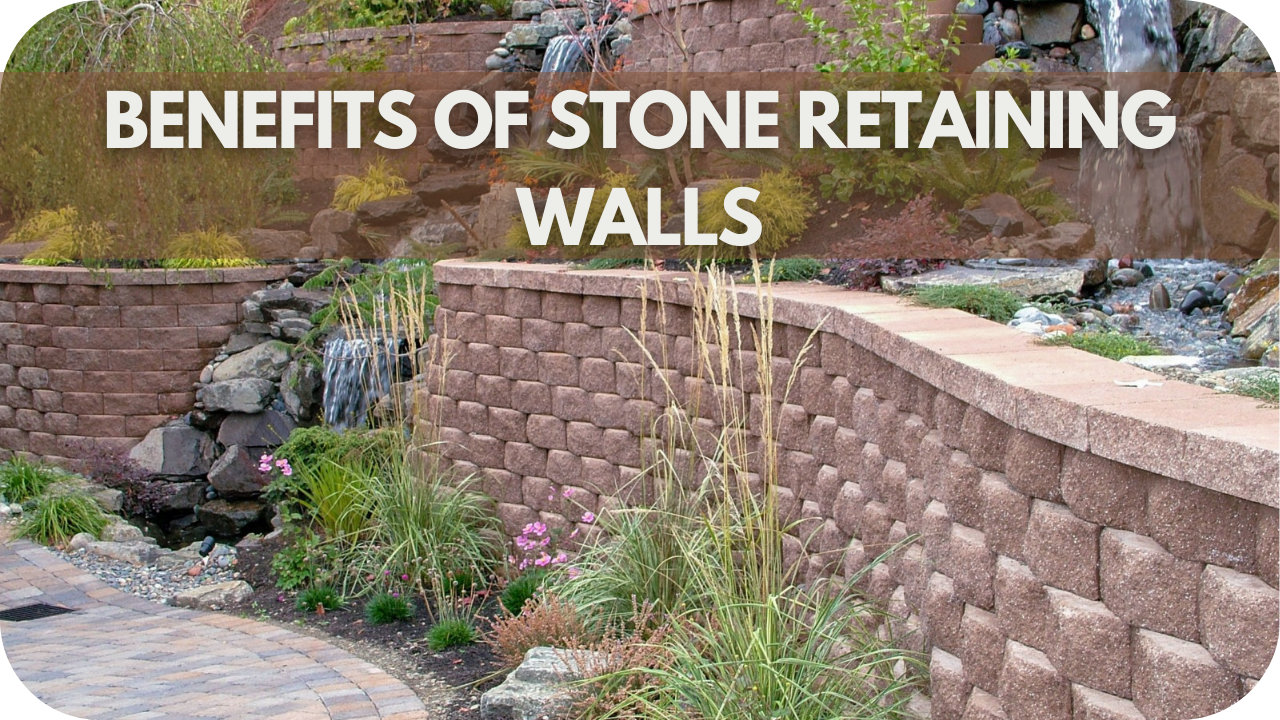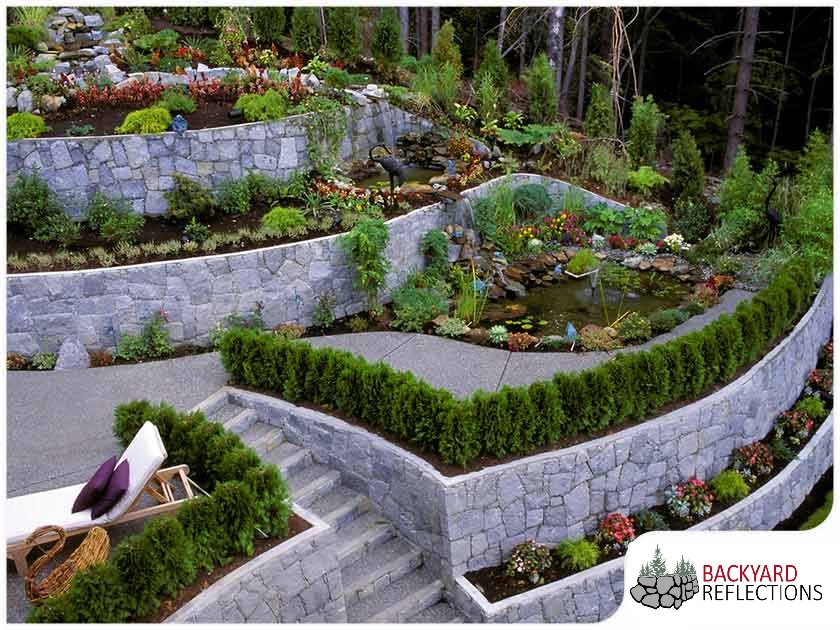Retaining Wall Repairs with OKC Precision Retaining Walls: What to look for and when
Secret Considerations for Building Effective Retaining Walls in Your Backyard
When you're taking into consideration developing a keeping wall surface in your lawn, it's important to assume regarding a number of crucial factors. The wall's purpose, the products you'll make use of, and the details soil conditions can all affect its performance and longevity.
Comprehending the Objective of Your Retaining Wall
When you think of developing a maintaining wall, consider its major purpose: maintaining soil and stopping erosion. Retaining walls supply necessary assistance for sloped landscapes, aiding to maintain soil stability. You'll discover they're important in areas where water runoff may or else get rid of soil, leading to pricey repair work and landscape damages.
By holding back earth, these walls create degree surfaces for gardens, patios, or paths. This not only enhances your yard's visual appeals but additionally advertises far better drain, minimizing water merging in undesirable areas. If you're dealing with steep slopes, a well-constructed retaining wall can protect against landslides, guaranteeing safety and security for you and your home.
Eventually, recognizing the purpose of your retaining wall surface will assist your design choices and assist you produce a practical, resilient structure that fulfills your requirements. So, take a minute to review your landscape; it'll settle over time.
Picking the Right Products
When selecting materials for your retaining wall, you'll want to take into consideration durability, aesthetics, and expense. Each factor plays an important duty in ensuring your wall stands the test of time while looking wonderful and suitable your budget plan. Allow's explore exactly how to make the finest options for your project.
Material Resilience Variables
Choosing the appropriate products is crucial for the long life and efficiency of your retaining wall, since their resilience directly influences the wall's ability to endure ecological stress and anxieties. Begin by considering your regional environment; products like concrete and rock withstand dampness and temperature changes well. If you stay in a location susceptible to hefty rainfalls, go with products with great drainage residential properties, like crushed rock or permeable blocks, to avoid water build-up.
Additionally, consider the soil conditions on your property. Some products do far better in certain dirt kinds, so it's crucial to match them accordingly. Be conscious of potential wear from parasites or disintegration. Choosing long lasting products warranties your retaining wall surface stands strong, shielding your lawn for years to come.
Aesthetic Design Options
Resilient materials not just guarantee your retaining wall surface's architectural honesty however additionally play a crucial function in its aesthetic appeal. Don't forget about the wall's form-- curved walls can produce a softer appearance, while straight lines can really feel much more organized. By carefully picking products that straighten with your aesthetic vision, you'll boost your exterior room while ensuring your wall stands solid versus the aspects.
Cost-Effectiveness Evaluation
Choosing the appropriate products for your retaining wall surface isn't simply regarding appearances; it's additionally important for your spending plan. When choosing products, think about both upfront costs and lasting sturdiness.
Do not neglect to factor in upkeep costs. Some materials, like all-natural rock, can include beauty and require less maintenance, while others may require normal treatments
Ultimately, weigh the benefits and drawbacks of each choice versus your budget and the wall surface's designated purpose. Investing carefully in materials currently can prevent costly issues down the road. Pick materials that balance expense and efficiency effectively.
Assessing Soil Problems and Drain
As you start your job, assessing soil conditions and drainage is crucial for the success of your retaining wall surface. Sandy soil drains well yet lacks security, while clay soil can preserve dampness, leading to pressure on your wall surface.
Following, examine the incline of your backyard. If water naturally flows toward your wall, you'll need to implement a water drainage option to stop erosion and pressure accumulation. Think about installing perforated pipelines or gravel backfill behind the wall surface to facilitate drain.
Finally, observe any nearby trees or plant life; their roots can affect soil stability. By recognizing your soil conditions and executing correct drainage, you'll develop a strong foundation for your retaining wall surface that stands the test of time.
Adhering To Local Building Ordinance
Before you start constructing your retaining wall surface, you need to study local guidelines to guarantee conformity. It's necessary to recognize what permits you should acquire, as this can conserve you from costly fines or needing to redesign your work. Taking these steps seriously will assist you construct a secure and reliable framework.
Research Local Rules
Comprehending local guidelines is important when intending your retaining wall surface job, especially because constructing codes can vary substantially by place. Begin by checking with your neighborhood structure department or district to find out about specific needs. Try to find guidelines on wall surface height, materials, water drainage systems, and structural stability. Many areas have constraints on the sorts of materials you can make use of and just how high you can build. You'll also wish to consider the zoning regulations that may influence your project. Ignoring these regulations can bring about pricey fines or the need to redo your work. By doing your study upfront, you can guarantee your retaining wall satisfies all essential codes and blends seamlessly into your backyard.
Acquire Necessary Authorizations
When you've looked into local policies, the following action is to acquire the essential permits for your retaining wall project. They may call for certain plans or click here for info design analyses, specifically for larger walls. Safeguarding the right authorizations can save you from pricey fines or having to dismantle your wall surface later on.

Preparation the Style and Visual Appeal
As you begin intending the style and visual appeals of your retaining wall, think about just how it will certainly integrate with the bordering landscape. Consider the products you'll make use of-- rock, block, or concrete-- and just how they'll enhance your home's design and the natural environments in your backyard. Select colors and structures that mix seamlessly with existing attributes like patio areas, pathways, or yards.
Next, envision the wall surface's form and height. Curved walls can soften a rigid landscape, while straight lines may share a more modern-day appearance. Don't neglect to include plants and greenery around the wall surface for an all-natural touch; this can improve its allure and integrate it into the setting.
Finally, bear in mind performance. Your design must not just be aesthetically pleasing yet also offer its function effectively. By thoughtfully intending these aspects, you'll create a preserving wall that boosts your lawn's charm while satisfying its architectural role.
Computing Height and Thickness Demands
To construct a sturdy retaining wall surface, you require to properly calculate its height and density requirements based on the dirt problems and the elevation of the incline it will support. Begin by examining the slope's angle and the kind of dirt, as different dirts apply differing amounts of pressure.
For walls over four feet high, consider a thickness of at the very least 12 inches. If the wall is taller, raise the density proportionally to preserve stability.
Next, determine the elevation of the wall surface by gauging the vertical distance it needs to preserve. For every single foot of height, you should generally prepare for a density of one-third of the wall surface's height.
Constantly keep in mind to make up added variables like drainage and backfill, which can affect your wall's style. Proper calculations now assure your retaining wall stands solid and lasts for many years ahead.
Maintenance and Longevity Considerations
While maintaining your retaining wall surface could look like a reduced concern, disregarding it see post can bring about considerable concerns in time. Regular assessments are vital; look for cracks, protrudes, or any signs of water damage. Resolving these problems early can save you from expensive fixings later on.
Watch on drainage systems, too. Clogged drains can cause water to develop, applying stress on your wall surface and compromising its security. Clear particles and assurance correct circulation to maintain longevity.
You might also intend to assess sealing your wall surface to shield it from moisture and weathering. Depending on the material, this may call for reapplication every couple of years.
Finally, landscaping around your wall can sustain its honesty. Prevent planting huge trees close by, as their origins can undermine the structure. With aggressive upkeep, your retaining wall can offer you well for many years to come.

Regularly Asked Concerns
Can I Build a Retaining Wall by Myself, or Should I Employ a Professional?
You can most definitely develop a retaining wall surface on your own if you have the right devices and understanding. Hiring an expert assurances it's done correctly, particularly for larger or more intricate frameworks. Consider your ability degree before deciding.
What Are the Many Common Blunders Made When Building Retaining Walls?
When building retaining walls, you may forget proper drainage, miss using the appropriate products, or overlook support. These typical errors can lead to Look At This structural failure, so take your time and strategy meticulously to prevent concerns.
How Do I Know if My Retaining Wall Requirements Support?
You'll understand your retaining wall surface requires support if you discover splits, leaning, or bulging. Examine for water pooling behind it or dirt erosion near the base. Address these indicators quickly to avoid further damage.
What Plant kingdom Appropriate for Landscaping Around a Retaining Wall?
When landscape design around a retaining wall, take into consideration utilizing low-maintenance plants like succulents, decorative lawns, or slipping ground covers - OKC Precision Retaining Walls. They'll prosper in those conditions and include beauty while preventing dirt disintegration around your wall
Just How Can I Avoid Disintegration Around My Retaining Wall?
To stop disintegration around your retaining wall surface, you can grow ground cover, use mulch, and mount water drainage systems. Regularly inspect for water buildup and readjust landscape design to reroute runoff away from the wall surface.